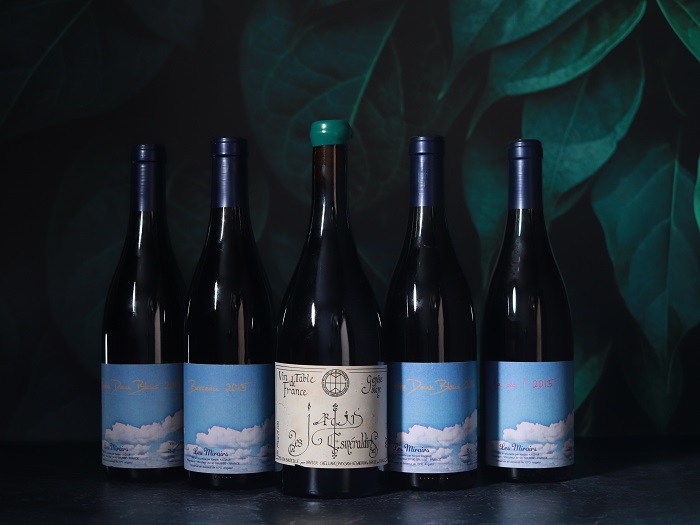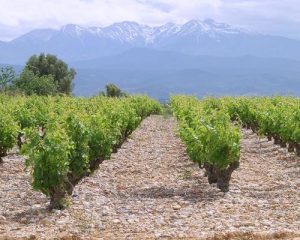
Formally known as Vin de Table, Vins de France have historically suffered from not having a very good reputation. Today, while most of them are a massed-produced wines, some reflect the winemakers desire for more flexibility and creative control over their production which can’t be obtained under the umbrella of the appellations. Many of them are also linked to the natural wine movement. Wines with Vin de France on the label have been growing in popularity in recent years with many wine lovers on the lookout for the next best bottle.
WHEN DID WE START TALKING ABOUT VINS DE FRANCE?
Vin de France is the result of decades of history and the concept of the appellation d’origine contrôlée (AOC), which can be traced back to 1905. It was introduced not only to fight fraud but to augment the value of the prized terroirs. Since 1935 when the law on AOCs was introduced in France, more than 350 have been created across the country with the greatest number being found in Burgundy. The other levels to France’s designation system are appellation d’origine contrôlée (AOC), appellation d’origine protégée (AOP), and Indication géographique protégée (IGP). The AOP designation is simply the European-level equivalent to the AOC. For producers to use either of these labels, they must adhere to strict regulations regarding important production decisions like varietal composition, vinification methods, and the maximum yield their vineyards can produce. The IGP label on the other hand, is slightly less restrictive, with all steps of the wine growing and making process subject to precise geographical criteria. However, Vins de France only came into existence in 2009. Prior to that they were known as Vin de Table.
WHAT FACTORS MAKE A VIN DE FRANCE SUCCESSFUL?
Out of all the French wine produced, 47% falls under AOCs and 30% IGPs. 17% of it is destined to end up at a distillery to make brandies and eaux de vie, while 4% have no geographical indignation on their label. A percentage a little less than that was seen at iDealwine auctions in 2022. Vins de France represented 3.4% of the total bottles sold at auction last year with 6,742 bottles going under the hammer for an average price of €123. While the terroirs are protected by the famous AOC system, wines with Vin de France seem to be a big hit in the eyes of winemakers and wine enthusiasts alike.
Apart from the fact that a wine will be classified as a Vin de France if its grapes do not come from a AOC or IGP classified terroir, some producers prefer to break free of their restrictive framework. Others use their intuition and plant varieties that they feel are better suited to their soil or climate (which are constantly changing).There are so many human factors that a framework cannot always take into account. Some producers, such as François Chidaine and Jacky Blot at Taille aux Loups, have had to pay the price, having been forced to downgrade some of their flagship Vouvray cuvées (Les Argiles, Le Bouchet, Clos de Venise, Clos de la Bretonnière, etc.) on the grounds that they were not vinified within the appellation.
THE NATURAL WINE AND VIN DE FRANCE DUO
Winegrowers’ pursuit of greater freedom regarding their vinification decisions by breaking free from strict AOC regulations means that a great number of Vins de France are also natural wines.
The craze for natural wines is very much a reflection of the times, with consumers wanting to drink less but better, favouring products that respect the living world – the land and the wildlife as well as the people who work there – and seeking out authenticity and the taste of the terroir. Far from being a fad, it is in fact a well-informed viewpoint that we witness day in, day out in iDealwine auctions.
WHAT PROPOTION DOES NATURAL WINES TAKE IN IDEALWINE AUCTIONS?
As previously mentioned, Vins de France made up 3.4% of the bottles sold in iDealwine auctions in 2022 – it’s not exactly a figure to write home about. If we enlarge this scope to include natural wines (the Vins de France sold at auction last year make up a sub-group of this) then more than 10,000 bottles were sold at iDealwine auctions, representing 6% of all auction sales with an average price of €256.
It’s no big surprise that the Loire Valley, Auvergne and Jura are teeming with fabulous Vins de France, and bidders are gravitating towards them. The figures for 2022 speak for themselves:
- 100% of wines from Auvergne sold at iDealwine auctions in 2022 were labelled Vin de France.
- 37% of the Vins de France sold at auction last year came from the Loire (excluding those from Auvergne). If we include them, this figure rises to 43%.
- The top 20 highest-priced Loire bottles sold in 2022 included 9 Vins de France.
- 11% of the Vins de France sold at iDealwine auctions last year came from Jura.
WHAT ARE THE MOST SOUGHT-AFTER VINS DE FRANCE?
A number of names attracted a great deal of attention in 2022, illustrating the search for rarity, but also for recent vintages from a wide variety of regions. There are also many Vins de France made from tiny plots of land, which considerably enhance their reputation.
- Loire Valley: Les Jardins Esméraldins (Genèse 2004, €1,252), Richard Leroy with wines such as Les Noëls de Montbenault 2016 (€471) and Les Rouliers 2015 (€362)
- Auvergne: Pierre Beauger (a half-botle of sweet wine sold for €360), Mito Inoué (La Vague 2017, €446), Aurélien Lefort (Vin de France 2019 for €428)
- Burgundy: Yann Durieux (Vin de France 2015, €422), Bernard Van Berg (Vin de France 2015 selling for €397), Dandelion, Prieuré Roch and others
- Jura: Domaine des Miroirs (I Need The Sun 2015, €2,108)
Other regions are home to great natural wines, produced as Vins de France, and much sought-after at auction. These include Savoie (Michel Grizard), the Rhône Valley (Marie et Pierre Bénetière, Pierre Gonon, La Grande Colline), Corsica (Clos Canarelli), Roussillon (Pedres Blanques) and Languedoc (Cassagne et Vitailles). In Beaujolais, the spiritual home of natural wines, many of the most emblematic winemakers (Lapierre, Foillard, Yvon Métras, etc.) have retained their AOC designation. The Vins de France of Philippe Jambon, Julie Balagny and Jules Desjourneys can also be found at auction.
There’s no doubt that this category of wine is worth taking a look at, even if, as you may have already realised, you’ll have to use your wits to find your way around! One thing is certain, these wines are as likely to surprise you as they are to delight you.
See all Vin de France on iDealwine



